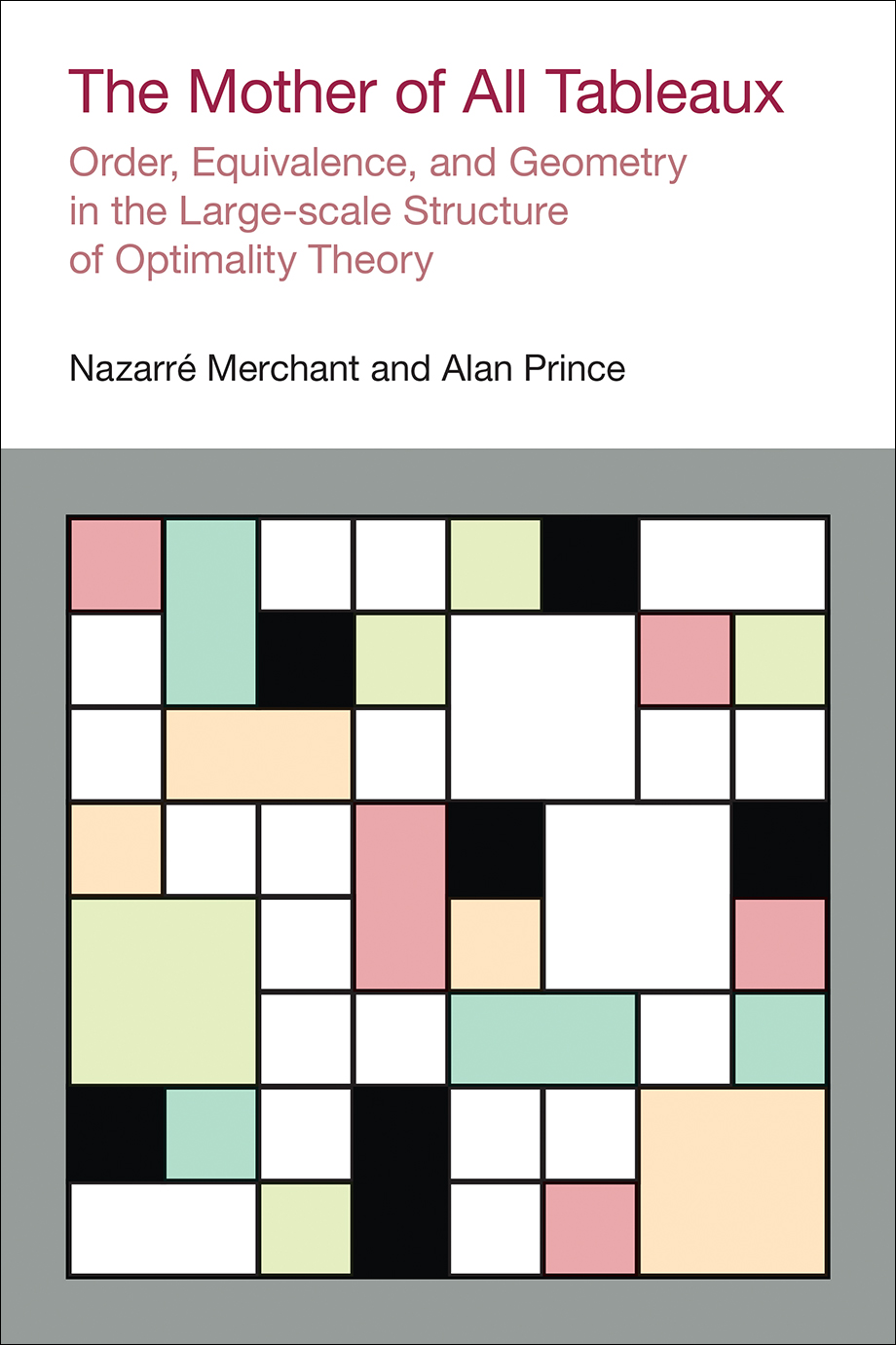The Mother of All Tableaux

ID: 2818 - View Book Page - Edit In OJS
An Optimality Theoretic grammar arises from the comparison of candidates over a set of constraints, oriented toward obtaining certain of those candidates as optimal. The typology of a specified system collects its grammars, encompassing all total domination orders among the posited constraints. Considerable progress has been made in understanding the internal structure of Optimality Theoretic grammars but, in this book, we move up a level from grammar to typology, probing the structure that emerges from the most basic commitments of the theory.
Comparison is once again central: a constraint viewed at the typological level rates entire grammars against each other. From this perspective, the constraint goes beyond its familiar role as an engine of comparison based on quantitative penalties and instead takes the form of a more abstract order and equivalence structure. This “Equivalence-augmented Privileged Order” (EPO) can be presented as a kind of enriched Hasse diagram. The collection of the EPOs, one for each constraint, forms the MOAT, the “Mother of All Tableaux”. The EPOs of a typology’s unique MOAT are respected in every violation tableau associated with it.
With the MOAT concept in place, it becomes possible to understand exactly which sets of disjoint grammars constitute valid typologies. This finding provides the conditions under which grammars of a given typology can merge to produce another, simpler typology and thereby abstract away informatively from various differences between them. Geometrically, the MOAT concept enables us to show, following the insights of Jason Riggle, that the grammars of a typology neatly partition its representation on the permutohedron into connected, spherically convex regions.
Discussion proceeds along both concrete and abstract lines, facilitating access for readers across a wide range of interests.
Published: Aug 21, 2023
Series
| Section | Chapter | Authors |
|---|---|---|
| Prelims | ||
| Acknowledgements | Nazarré Merchant, Alan Prince | |
| Introduction | ||
| Introduction | Nazarré Merchant, Alan Prince | |
| Chapter 1 | ||
| Overview | Nazarré Merchant, Alan Prince | |
| Chapter 2 | ||
| The EST Typology | Nazarré Merchant, Alan Prince | |
| Chapter 3 | ||
| EST: The MOAT and its EPOs | Nazarré Merchant, Alan Prince | |
| Chapter 4 | ||
| Analysis of the MOAT | Nazarré Merchant, Alan Prince | |
| Chapter 5 | ||
| Working out the MOAT: Jump to the CSys | Nazarré Merchant, Alan Prince | |
| Chapter 6 | ||
| Compatibility and the Join | Nazarré Merchant, Alan Prince | |
| Chapter 7 | ||
| Geometry | Nazarré Merchant, Alan Prince | |
| Appendices | ||
| Appendix I: Leg Set Partition of EST | Nazarré Merchant, Alan Prince | |
| Appendix II: EST: SKBs and Hasse Diagrams | Nazarré Merchant, Alan Prince | |
| Appendix III: EST.CSys: SKBs and Hasse Diagrams | Nazarré Merchant, Alan Prince | |
| Appendix IV: Notation | Nazarré Merchant, Alan Prince | |
| End Matter | ||
| Bibliography | Nazarré Merchant, Alan Prince | |
| Definitions, Facts, Remarks, Lemmas, Theorems and Corollaries | Nazarré Merchant, Alan Prince | |
| Index | Nazarré Merchant, Alan Prince | |
Reviews
This important book is privileged within the 'Abstract OT' research program in that it ties together many key pursuits and results within that program: ERC representations and unitary violation tableaux via Minkowski summation (Prince), the FRed algorithm (Brasoveanu & Prince), the join (Merchant), the classification program (Alber & Prince), and the geometric properties of typologies and of the grammars within them (Merchant & Riggle). This is the first monograph-length work published within Abstract OT, and the Advances in Optimality Theory series is its rightful place.
Professor Eric Bakovic, University of California, San Diego